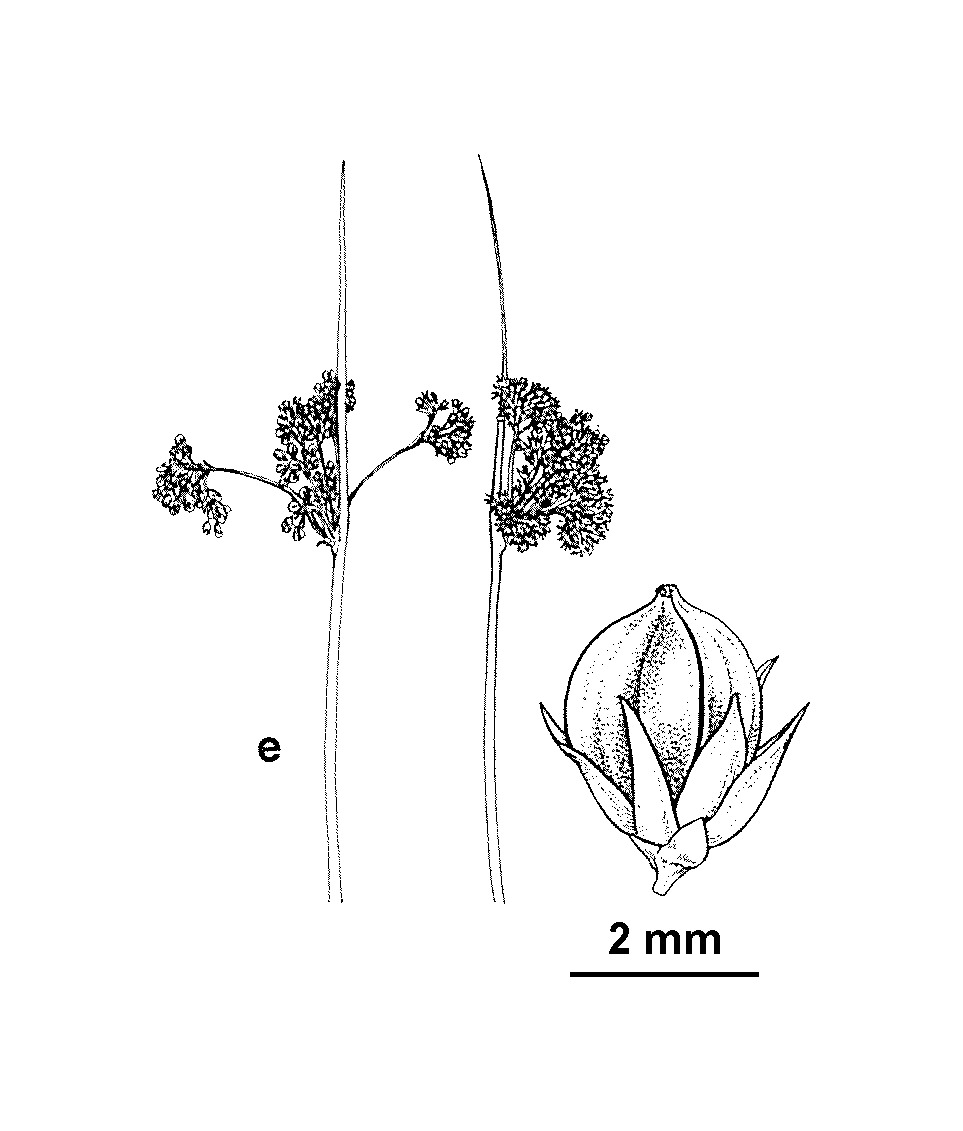Juncus brevibracteus
L.A.S JohnsonLoosely tufted robust perennial with horizontal or ascending rhizomes. Cataphylls broad, often tight, dark reddish-brown to reddish-orange towards the base, to 20 cm long. Culms erect, green, 70–200 cm high and 3–6.0 mm diam.; striations c. 75–140, crowded, not strongly raised; pith white to fawn-coloured in the lower part of the stem, interrupted throughout or continuous in the upper half (very rarely continuous throughout); stomates superficial. Inflorescence moderately compact, flowers scattered or clustered (but not forming separate subglobular clusters); primary bract continuous with culm, to c. 16 cm long; secondary bract subulate, less than 10 mm long; prophylls present. Tepals stramineous or occasionally with a faint reddish-brown longitudinal band on either side of the stramineous midrib, 1.5–2.3 mm long; stamens 3, anthers c. 0.4–0.8 mm long. Capsules with an obtuse to sub-acute golden-brown to reddish-brown apex, equal to or exceeding the tepals, 1.6–2.5 mm long. Flowers recorded Jan.–Feb., ripe capsules recorded Feb.
EGU, HNF, MonT, HFE, VAlp. Also NSW, ACT. A rare species of montane and subalpine creeks and Sphagnum bogs in eastern Victoria.
Similar to Juncus procerus but distinguishable by the characters provided in the key. Rare specimens of J. brevibracteus with continuous pith resemble J. alexandri subsp. alexandri but are distinguished by the finer, more numerous and not strongly raised culm striations. Johnson (1993) includes within his circumscription of J. brevibracteus plants with culms as narrow as 2.1 mm diam. and with as few as 45 culm striations, presumably on the basis of finer-culmed plants occurring in NSW. Hybrids with J. sarophorus are known.
Albrecht, D.E. (1994). Juncus. In: Walsh, N.G.; Entwisle, T.J., Flora of Victoria Vol. 2, Ferns and Allied Plants, Conifers and Monocotyledons, pp. 197–233. Inkata Press, Melbourne.
 Spinning
Spinning
